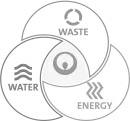Every year in the United States, about 3,000 people lose their lives in residential fires. Most fire victims die from inhalation of smoke and toxic gases, not as a result of burns. Protect yourself and your family by regularly testing your smoke alarm batteries and replacing them at least once a year.
SMOKE ALARMS
Properly installed and maintained smoke alarms in the home are considered one of the best and least expensive means of providing an early warning of a potentially deadly fire. Smoke alarms save lives, prevent injuries, and minimize property damage by enabling residents to detect fires early in their development. The risk of dying from fires in homes without smoke alarms is twice as high as in homes that have working smoke alarms.
All smoke alarms should be tested at least once a month to make sure they operate properly. If a smoke alarm is battery operated, replace the batteries at least once a year to make sure the alarm will work when it is needed. It’s a good practice to make replacement of batteries a seasonal routine, such as when resetting clocks in the fall or spring. Always follow the manufacturer's instructions for testing smoke alarms and replacing the batteries.
If your battery-powered smoke alarm begins to emit a low-power warning, usually a chirping sound, replace the battery immediately with a fresh one. This will ensure that your smoke alarm will continue to provide protection.
Never disable your smoke alarm, even if you experience "nuisance" alarms while cooking or showering. Clean the smoke alarm following the manufacturer's instructions, and if possible relocate it away from the kitchen or bathroom. If nuisance alarms are a persistent problem, you may need to look for a different type of smoke alarm. A photoelectric smoke alarm is less sensitive to common causes of false alarms. Some smoke alarms have a silencing feature, so nuisance alarms can be stopped quickly and easily.
Place at least one smoke alarm on every level of your home. The most important location is near the bedrooms to provide an early warning to all sleeping occupants.
FAMILY ESCAPE PLANS
The Consumer Product Safety Commission (CPSC) urges homeowners to develop and rehearse an escape plan so that when the smoke alarm sounds, family members will immediately move to a safe location outside the home.
CPSC recommends the following on fire escape planning:
- Every family should develop a home fire escape plan and practice it at least twice a year with the entire household.
- Practice the fire escape plan with your children, baby-sitter and older family members.
- During practice, it is important to be aware of and remove obstacles that may prevent a quick and safe evacuation, such as blocked exits or jammed or barred windows.
Children, the elderly and individuals with special needs may not awaken from the sound of a smoke alarm. Parents and caretakers should hold a fire drill during the night so they can assess their dependent’s ability to awaken and respond appropriately. If someone cannot wake up to or hear the smoke alarm, the escape plan should be adjusted accordingly to help get all family members out safely.
ALARM BATTERY RECYCLING
RecyclePak®: Convenient Mail-Back Recycling
Veolia’s RecyclePak® program offers a convenient, cost-effective and proactive way to recycle your used batteries, as well as lamps, ballast, e-waste and other mercury-bearing wastes. Like all of our recycling and disposal services, RecyclePak® is designed to ensure safety and regulatory compliance and to make recycling easy for you.
Fill, Seal and Ship:
You can order RecyclePak® online. When you receive it, simply fill it with recyclables, seal the container, and ship using a pre-paid, pre-addressed shipping label.
With RecyclePak®, Veolia provides:
- Secure, online ordering of pre-paid RecyclePak® containers - you select the quantity, sizes and types you need based on your waste requirements
- Chat online with a representative who can answer your questions
- Request pick-ups online when you’re ready to ship
- Downloadable packing instructions for each type of container
- Certificates on Demand—a free online feature that helps you maintain compliance and enables you to download Certificates of Acceptance for your RecyclePak® container
Visit Veolia’s dedicated RecyclePak® website to learn more and to start recycling.
Locations
When you ship a RecyclePak®, it goes to one of Veolia’s state-of-the-art recycling facilities. As required by law, Veolia maintains fully-funded closure plans for these facilities.
Our recycling facilities are:
- Fully-permitted and state-licensed
- State-approved for universal waste
- Audited by federal and state regulatory agencies
- CHWMEG audited
Veolia offers:
- Company-owned transportation
- An audited network of approved third-party transporters
Compliance
Veolia North America helps you:
- Ensure that the handling, transport, recycling, reuse and disposal of all waste products meet state and federal regulations
- Protect against liability
Veolia recycling:
- Meets or exceeds the standards set by the Federal Resource Conservation and Recovery Act (RCRA)
- Complies with the Universal Waste Rule
- Provides contractors operations and professional services protection (COPS)
- Maintains excess umbrella coverage to protect against liability
- Offers technical expertise in hazardous waste, including compliance management solutions and training
This information is provided by Veolia North America to help you protect your personal safety. Content is drawn from the U.S. government’s Consumer Product Safety Commission report and other online safety resources.

Veolia is uniquely positioned to service industry, government and commercial entities in improving performance, managing water, waste and energy.
Learn how


